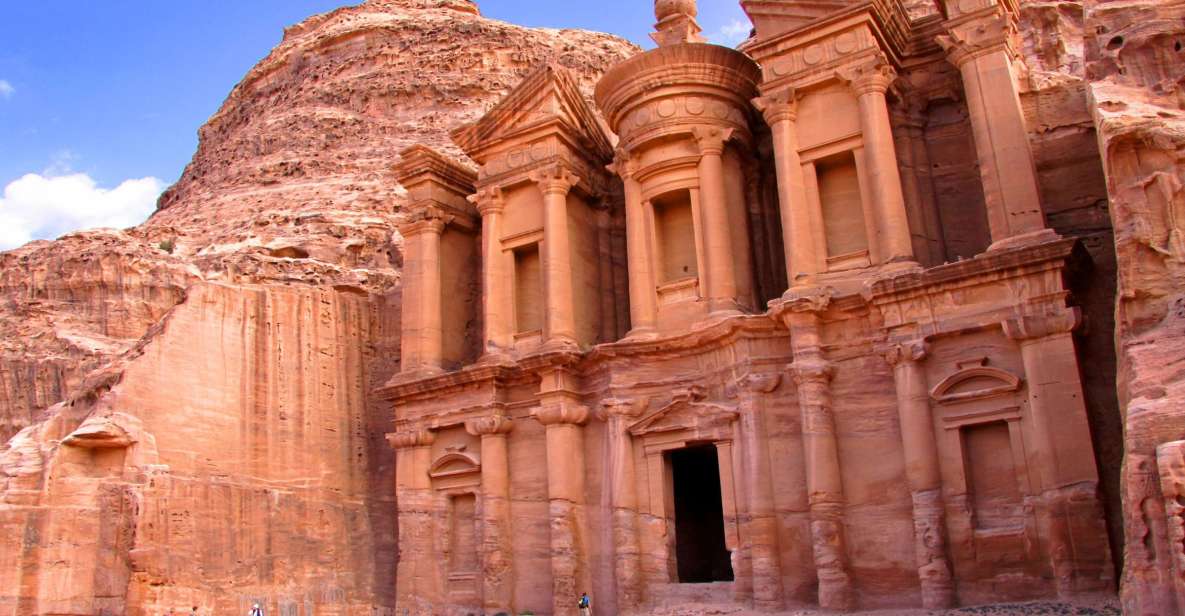Preparing to immerse yourself in the ancient wonders of the Lost City of Petra and the mesmerizing Mars-like landscapes of Wadi Rum? As captivating as these sites are, the prospect of navigating them independently poses challenges – language barriers, scarce public transportation, and the remoteness of the desert location.
The solution? Organized tours with English-speaking drivers emerge as the preferred choice. Let our Petra guide be your compass in exploring the most recommended Petra and Wadi Rum Tours from Amman.
Dive into the must-see attractions, the rich history of Petra, and the captivating experiences Wadi Rum offers. Discover the best times to visit, unravel what to expect, and glean insider tips for an extraordinary journey.
The countdown to your Jordanian adventure begins now!

Compare the Best Petra and Wadi Rum Tours from Amman, Jordan
Let's kick off by delving into our curated selection of the top-rated Petra and Wadi Rum Tours from Amman, Jordan. We've sifted through various reliable booking platforms to handpick the best options.
Below, you'll find quick links and brief descriptions for our recommended 1-day tour, 2-day trip and 3-day tour, highlighting their distinctive inclusions and tour details.
Quick Booking Links
- From Amman: Private Day Tour to Petra & Wadi Rum
- From Amman: Petra, Wadi Rum, and Dead Sea Private 2-Day Trip
- From Amman: Petra, Wadi Rum and Dead Sea 3-Day Tour
Descriptions of 3 Top-Rated Petra Tours
- Hotel pickup and drop-off
- 2-hour 4x4 Jeep Tour in Wadi Rum
- Entrance tickets (if option selected)
- Water
- WiFi
- Departs from: Hotel pick-up from your accommodation in Amman
- Starting Time: Multiple starting times, ranging from 6 am to 8 am available
- Duration: approx. 14 hours
- Good to know: No guide is included; only an English-speaking driver.
- Hotel pickup and drop-off
- Air-conditioned vehicle
- WiFi on board
- Wadi Rum accommodation in a deluxe tent (if option selected)
- Breakfast and dinner (if option selected)
- 2-hour Jeep 4X4 safari in Wadi Rum (if option selected)
- Petra, Wadi Rum, and Dead Sea Resort entrance fees (if all-inclusive option selected)
- Bottled water
- Departs from: Hotel pickup from Amman
- Starting Time: 7:00 am, 7:30 am or 8:00 am
- Duration: approx. 2 days
- Good to know: No local guide is included in any option; only an English-speaking driver is provided.
- Hotel pickup and drop-off
- Wadi Rum Accommodation in Deluxe Tent - (if Accommodation or All-inclusive option selected)
- 1 night in a 3-star hotel in Petra (1 room for up to 3 people per booking - if Accommodation or All-inclusive option selected)
- 1 night at a camp in Wadi Rum (1 tent for up to 3 people per booking - if Accommodation or All-inclusive option selected)
- Breakfast & Dinner - (if Accommodation or All-inclusive option selected)
- Jeep 4*4 safari 2 Hours in Wadi Rum - (if Accommodation or All-inclusive option selected)
- Petra, Wadi Rum, Dead Sea Resort, Mount Nebo and Shobak Castle Entrance Fees - (if All-inclusive option selected)
- Bottled water
- Air-conditioned vehicle
- WiFi on board
- English-speaking driver
- Departs from: Hotel pick-up from hotels in Amman
- Starting Time: 7:00 am, 7:30 am, 8:00 am, or 8:30 am
- Duration: approx. 3 days
- Good to know: No guide is included; only an English-speaking driver.
What and where is Petra?
Petra is a renowned archaeological site in the southwestern part of Jordan, next to the town of Wadi Musa. The ancient city was carved into rose-red cliffs and served as the capital of the Nabataean Kingdom in the 4th century BC.
Known as the "Lost City," Petra slipped from Western memory after its decline. Rediscovered in the 19th century by Swiss explorer Johann Ludwig Burckhardt, Petra's historical grandeur was revived. Visitors can visit the UNESCO World Heritage Site and explore impressive rock-cut tombs, temples, and the intricate water conduit system in this historical desert city.
What and where is Wadi Rum?
Wadi Rum, also known as the Valley of the Moon, is a protected desert wilderness in Jordan, characterized by its dramatic sandstone mountains, narrow canyons, and ancient petroglyphs. This vast and surreal landscape covers approximately 720 square kilometers.
Located in the southern part of Jordan, Wadi Rum is about 100 kilometers (62 miles) south of Petra and approximately 230 kilometers (142 miles) south of the capital, Amman. The site holds cultural and historical significance, with evidence of human habitation dating back to prehistoric times. Wadi Rum is not only a UNESCO World Heritage Site, but also a popular destination for tourists seeking a truly unique desert experience.
How to Get to Petra and Wadi Rum from Amman, Jordan?
Traveling from Amman to the awe-inspiring landscapes of Petra and Wadi Rum presents various transportation options to suit your preferences. Here are three viable choices:
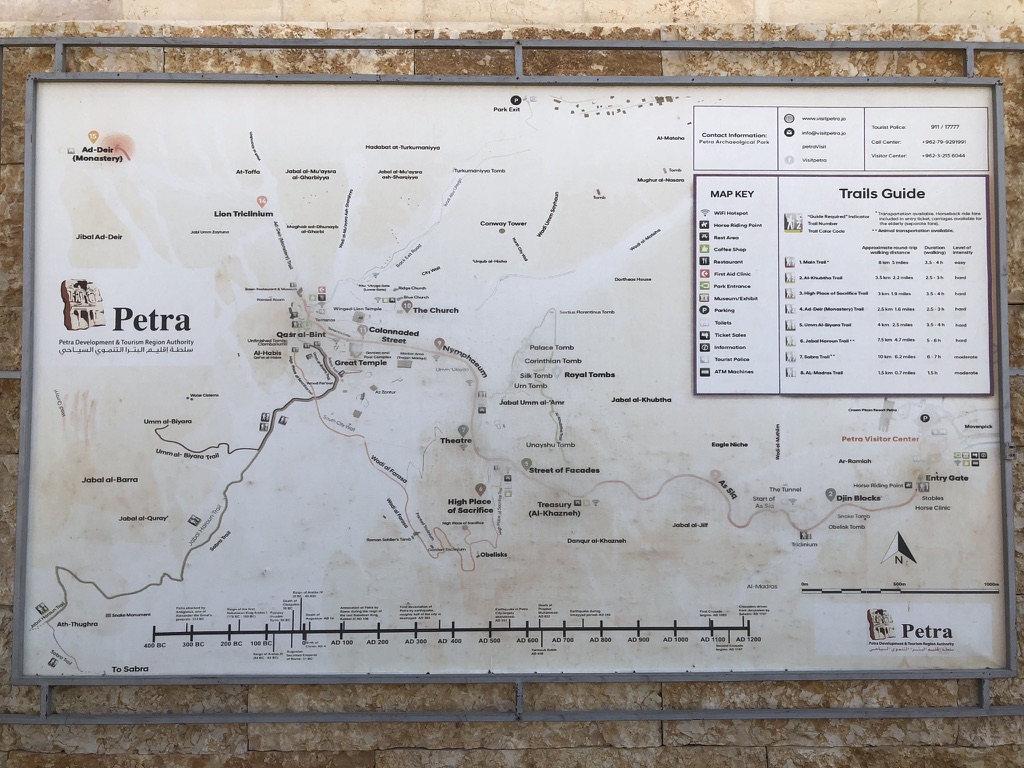
Petra and Wadi Rum Tours from Amman, Jordan: Is it worth it?
Absolutely! Petra and Wadi Rum are not only extraordinary UNESCO World Heritage Sites but also iconic bucket-list destinations, each offering a distinctive and exceptional experience.
Petra, crowned as one of the 7 New Wonders of the World, unfolds the grandeur of the Nabataean civilization through rock-cut tombs, temples, and ruins. Yet, it's Wadi Rum that emerges as the unexpected hero. Often underestimated, this desert gem surprises and enchants with mind-blowing experiences—jeep tours, camel rides, stargazing, and camping in Bedouin tents amidst a Martian-like landscape. Combining these two destinations in your Jordanian adventure is like unlocking a hidden treasure trove of experiences.
Navigating these iconic sites independently can be daunting due to language barriers, and a lack of good public transportation. Opting for an organized tour with an English-speaking driver not only eliminates logistical hassles but also provides convenient transportation and a well-structured itinerary, which may also include other must-see sites like the Dead Sea.
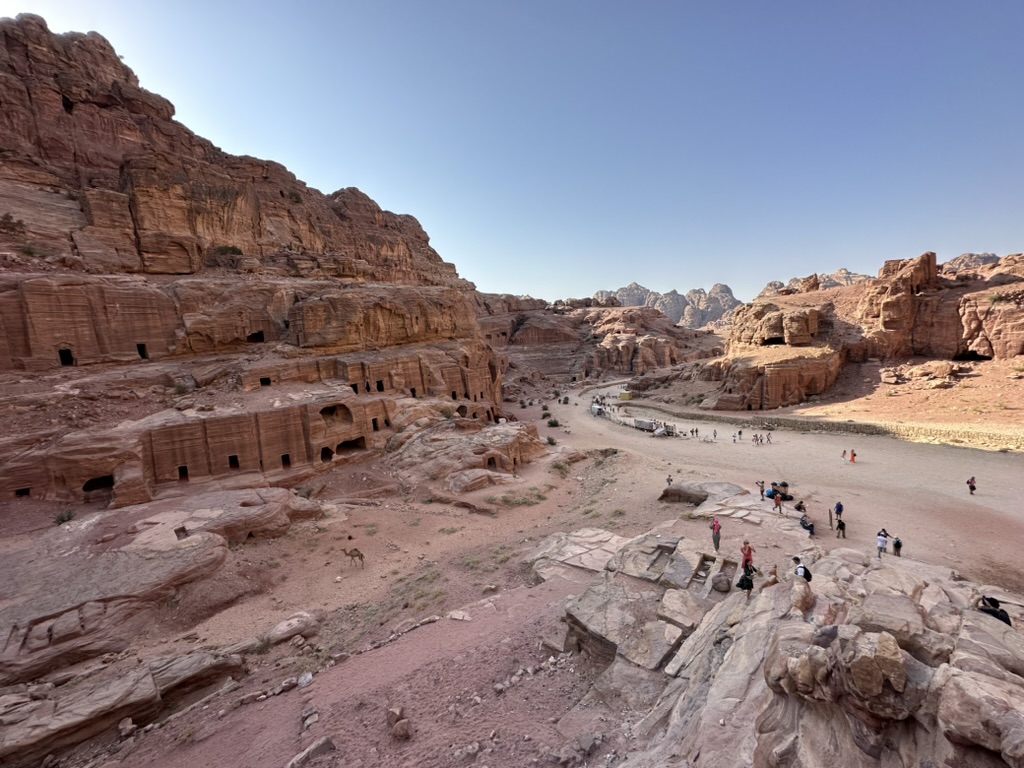
What can I See and Do on a Petra and Wadi Rum Tour from Amman, Jordan?
Now that we've agreed that a Petra and Wadi Rum tour is non-negotiable, let's shift our focus to the star attractions awaiting you in Petra in the order you encounter them from the main entrance. Following that, get ready for an array of incredible experiences set to unfold in the mesmerizing Wadi Rum.
9 Must-See Attractions of Petra
- Petra Museum: Those who wish can enhance their understanding of Petra's history with a visit to the Petra Museum, located at the main entrance, in front of the Petra Visitor Center. Immerse yourself in a rich collection of artifacts that provide valuable context to the archaeological marvel you're exploring.
- The Siq: Begin your adventure with the winding, towering gorge of the Siq, serving as a mesmerizing entrance to Petra. This canyon not only provides a dramatic introduction but also reveals ancient Nabataean carvings. After a leisurely 30-minute strollthrough this 1.2 km canyon, you'll find yourself standing in awe at the doorstep of the Treasury.
- The Treasury (Al-Khazneh): Arguably the crown jewel of Petra, Al-Khazneh, also known as the Treasury, stands as an iconic structure intricately carved into rose-red cliffs. Adorned with intricate friezes, figures and Corinthian capitals, the 40-meter facade creates a moment of sheer awe and wonder. If you observe closely, you can spot bullet holes, a testament to local beliefs that the former mausoleum conceals a hidden treasure.
- The Viewpoints: Petra unfolds its beauty through captivating perspectives, including two Instagram-famous viewpoints overlooking the Treasury. Ascend from both the right and left sides of the Treasury to reach these spots, offering unique photo opportunities that showcase the beauty of the magnificent Treasury. Bedouin guides can accompany you to these viewpoints for a small fee.
- The Theater: Carved directly into the side of a mountain, the Roman Theater stands as an impressive venue that once hosted gatherings, performances, and even Gladiator fights. Notably, it is the only amphitheater in the world entirely carved out of rock. Consisting of three rows of seats and seven stairways, the theater has a capacity to hold around 4,000 people.
- The Royal Tombs: The Urn Tomb, Silk Tomb, Corinthian Tomb, and Palace Tomb showcase the Nabataeans' mastery in rock carving and house fascinating chambers. The Palace Tomb, in particular, sparks speculation as a potential resting place for the kings of Petra. Located to the right off the main trail, these tombs provide a captivating exploration into Petra's rich architectural heritage.
- The High Place of Sacrifice: Undertake a challenging 40-minute ascent to the High Place of Sacrifice, an ancient religious site on a mountain plateau. Your efforts will be rewarded with an elevated altar providing panoramic views of the ancient city below that extend the sense of wonder.
- The Great Temple & Colonnaded Street: Lined with remnants of markets, shops, and public buildings, the Colonnaded Street paints a vivid picture of daily life in ancient Petra. Next to it lies Petra's largest structure, the Great Temple complex. It beckons visitors with a glimpse into the city's former grandeur. Its vast courtyard and well-preserved architectural elements stand as silent witnesses to Petra's historical significance.
- The Monastery (Al-Deir): Ascend nearly 850 stone steps to Petra's second most famous attraction, the Monastery. The monumental 48-meter-high (155 ft) structure, with its impressive facade, surpasses even the Treasury in height. Dating back to the 2nd century AD, it is believed to have been repurposed as a church during the Byzantine era. While entrance inside is prohibited, the exterior's intricate details and mystic atmosphere make the climb worthwhile.

9 Top Things to Do in Wadi Rum
- 4x4 Jeep Tour: An exhilarating 4x4 Jeep Tour through the seemingly Martian landscape is without a doubt one of the many highlights that await visitors in Wadi Rum. Traverse the rugged terrain, navigating through narrow canyons and expansive sand dunes. Your skilled Bedouin guide will lead you to hidden gems and panoramic viewpoints, providing an extraordinary adventure that unveils the desert's secrets.
- Hot Air Balloon Ride: Take to the skies on a hot air balloon ride for a unique perspective of Wadi Rum's vast and mesmerizing landscapes. Soar above the desert and enjoy panoramic views that extend to the horizon.
- Camel Riding: Experience the traditional mode of desert transportation by taking a camel ride. Traverse the sandy trails and enjoy the rhythmic pace of these desert-adapted creatures.
- Sunrise/ Sunset in the Desert: There is no more beautiful place to watch the sunset or sunrise than the Wadi Rum Desert. As the sun dips below the horizon, the desert landscape transforms, casting a warm glow on the red sands and creating a surreal, breathtaking spectacle.
- Tea in a Bedouin Tent: Immerse yourself in Bedouin hospitality by enjoying a cup of traditional tea in a Bedouin tent. Engage with the locals, learn about their culture, and savor the authentic flavors of Bedouin tea, an integral part of the desert experience.
- Sand Duning: Feel the thrill of sand duning as you traverse the desert on a thrilling adventure. Whether on a sandboard or a guided dune bashing experience, the undulating sands of Wadi Rum offer an exhilarating ride and a chance to connect with the dynamic nature of the desert.
- Visit Must-See Sights: Discover the hidden highlights and unique rock formations of the Wadi Rum desert with your Bedouin guide. These include Lawrence's Spring, "The Seven Pillars of Wisdom"; Mushroom Rock; the Ship Rock, the Burdah Rock Bridge, the Khazali Canyon with ancient Nabataean inscriptions and petroglyphs, as well as the filming site of the "Martian" movie.
- Stargazing: Conclude your day in Wadi Rum by indulging in a mesmerizing stargazing experience. The clear desert skies offer a canvas for a celestial spectacle, providing an opportunity to marvel at the Milky Way, constellations and planets above.
- Desert Camping: Enhance your Wadi Rum journey with a stay at a traditional Bedouin camp. Immerse yourself in Bedouin hospitality, enjoy traditional meals, and spend a night under the star-studded desert sky, experiencing the tranquility of the desert night. Elevate your desert experience by glamping in a unique Bubble Tent or a Martian Dome. The transparent walls of the bubble provide an unparalleled view of the night sky, creating a magical and unforgettable stay.
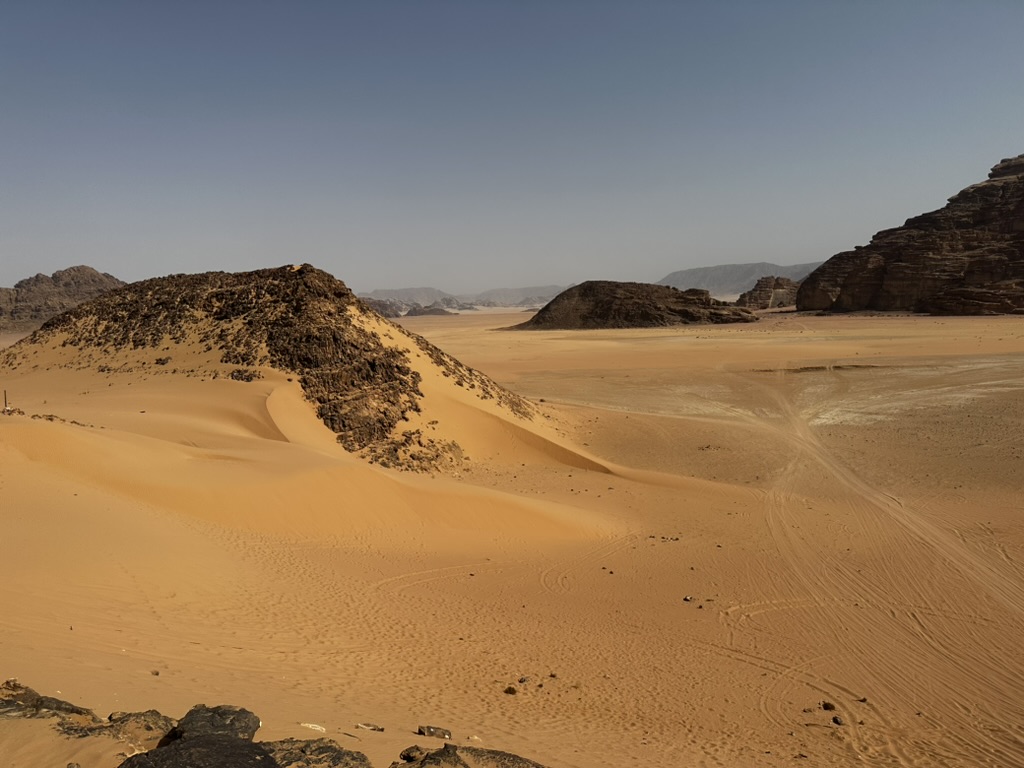
Petra and Wadi Rum Tours from Amman: What to Expect?
Exploring the nitty-gritty details before booking your Petra and Wadi Rum Tour from Amman is crucial. Let's delve into some practical aspects you need to be aware of before making your reservation.
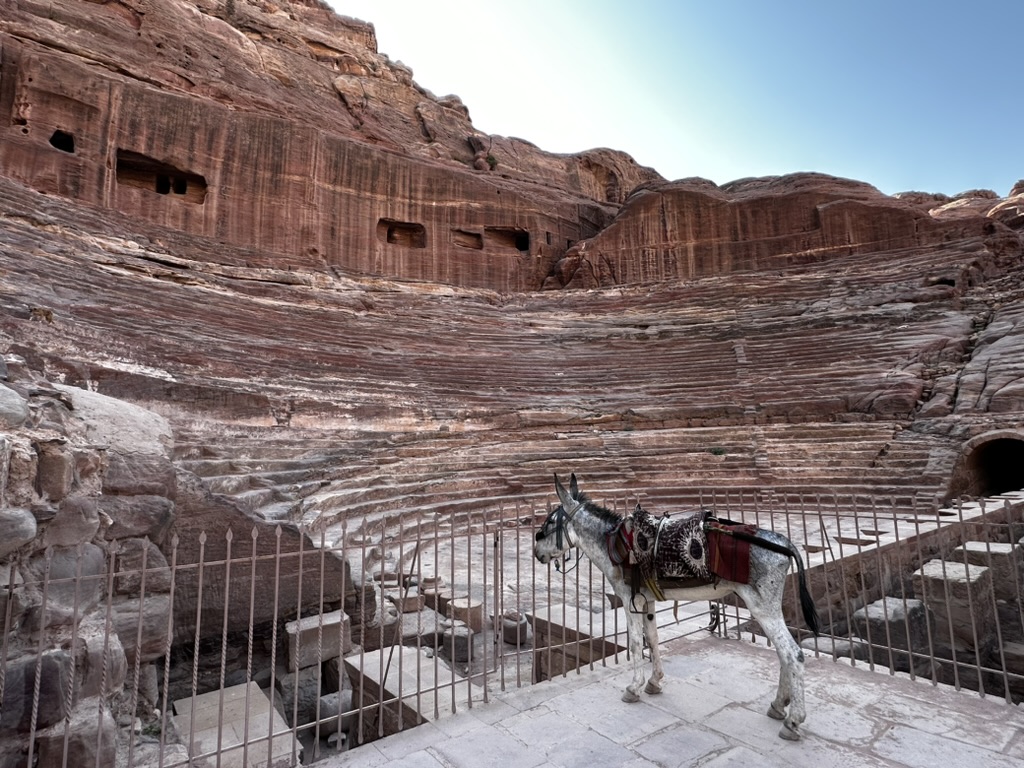
When is the Best Time for Visiting Petra and Wadi Rum
For an optimal experience, plan your journey to Petra and Wadi Rum during spring (March to May) or fall (September to November). These seasons boast the best temperatures for your exploration.
Summer brings higher temperatures, often exceeding 30°C (86°F) and occasionally reaching over 40°C (104°F). This period can be challenging for exploring Petra and Wadi Rum or staying in a tent without AC in the desert.
While winter sees cooler temperatures, ranging from 8°C to 15°C (46°F to 59°F), it can still be a suitable time for a visit. The days are crisp, and attractions are less crowded. However, be prepared for colder evenings, especially in the desert. The downside is a higher chance of rain (and even snow) with potential flooding risks in Petra.
What are the Opening Hours of Petra, Jordan?
Petra welcomes visitors early in the morning at 6:00 AM. While there's no official closing time, it's mandatory to exit before sunset. The recommended departure times are 7:00 PM in the summer and 5:00 PM in winter, as indicated by a sign at the entrance gate.

Petra and Wadi Rum Tours from Amman: What to Wear?
Dressing appropriately for your Petra and Wadi Rum adventure is crucial to ensure comfort and enjoyment amid the diverse terrains. Here's a guide on what to wear:
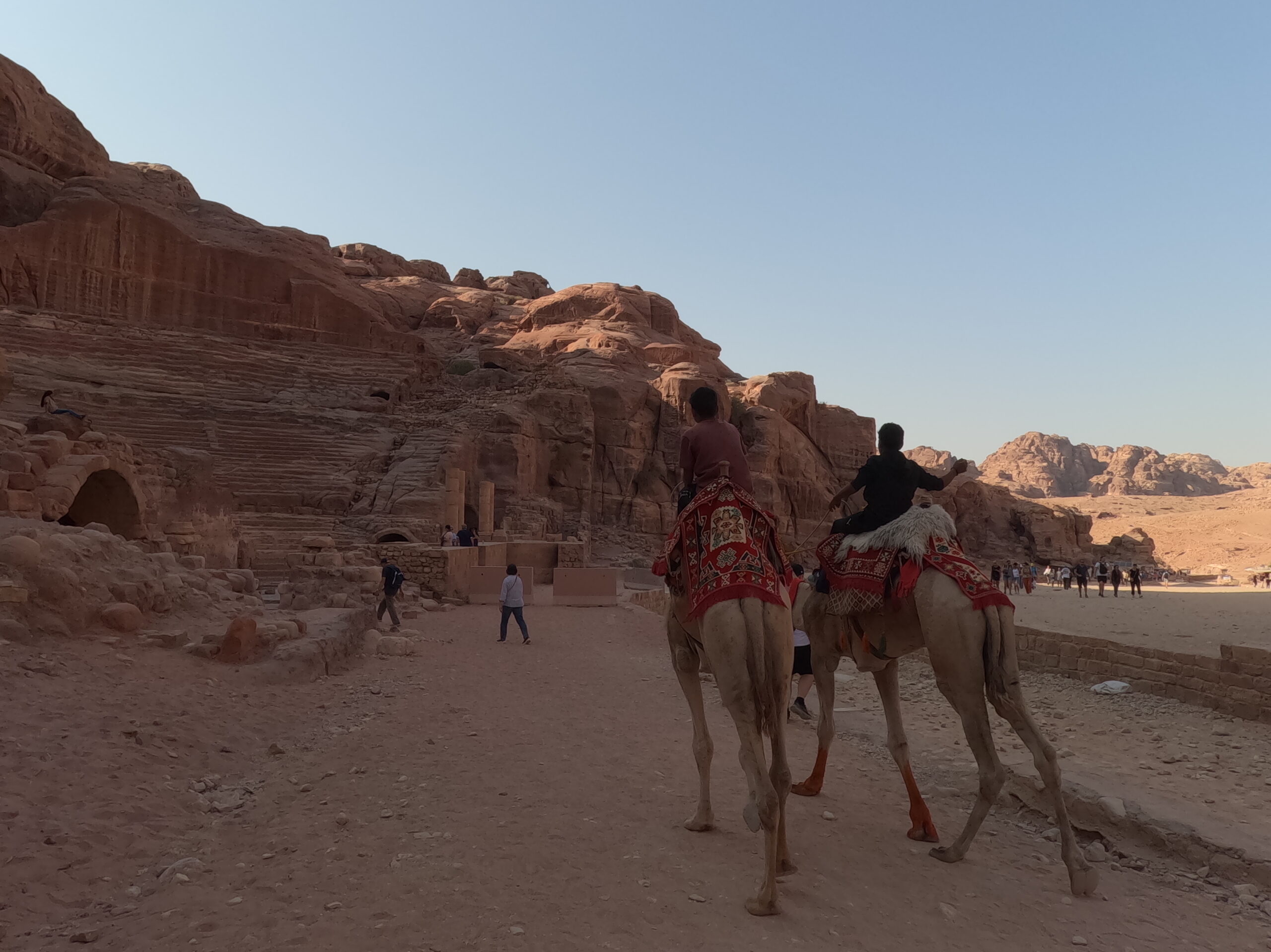
11 Insider Tips for your Petra and Wadi Rum Tours from Amman, Jordan
We gathered 11 insider tips to ensure that you enjoy a seamless and memorable trip to Petra and Wadi Rum.
- Book Tickets in Advance: To streamline your journey, book tickets for your Petra and Wadi Rum tour in advance. This ensures availability, especially during peak tourist seasons.
- Early Bird Gets the View: If you go on your own, we advise to visit Petra early in the morning to avoid the peak heat and crowds. The morning light not only offers fantastic photo opportunities but also allows you to explore the iconic sites of Petra, like the Treasury, with fewer people around.
- Comfortable Footwear is Key: Both Petra and Wadi Rum involve a fair amount of walking on uneven terrain, so make sure to wear comfortable shoes. Whether you're navigating the narrow pathways of Petra or trekking through the Martian-like landscape of Wadi Rum, comfortable footwear is a game-changer.
- Be aware of the walking distances: Petra's vastness demands smart planning. Understand the walking distances, especially to distant gems like the Monastery. Plan your itinerary wisely, and consider optimizing your time by hiring a guide for insights and efficient navigation.
- Hydrate, Hydrate, Hydrate: Jordan's climate can be unforgiving, especially in the desert. Carry a water bottle and stay hydrated throughout your explorations. Remember, staying hydrated is crucial for enjoying your journey to the fullest.
- Sun Protection is a Must: The Jordanian sun can be intense. Arm yourself with sunscreen, a wide-brimmed hat, and sunglasses to shield yourself from the sun's rays. This simple preparation will make your outdoor adventures far more enjoyable.
- Pack a Backpack: A small backpack can make your explorations more comfortable. Pack essentials like snacks, a camera and power bank, a light scarf and the Petra map that is available at the visitor center entrance. This way, you're prepared for a full day of adventure without the burden of carrying unnecessary items.
- Be cautious in Petra: Ensure your safety by avoiding proximity to steep and slippery edges during the ascent. If traveling with children, keep a watchful eye to ensure a secure and enjoyable experience for all.
- Rainy Days: Exercise caution and plan your visit wisely by avoiding Petra on rainy days. The narrow passages, especially the Siq, are susceptible to sudden flooding, leading to closures for safety reasons. Check weather forecasts before your excursion, and if rain is anticipated, consider rescheduling your visit to ensure a secure and enjoyable exploration of this ancient marvel.
- Capture the Night Sky in Wadi Rum: Wadi Rum is renowned for its clear night skies. Even if you are exhausting from a long day of exploration, be sure to take a moment to witness the breathtaking celestial display at night.
- Bring Essentials to Wadi Rum: Given the limited buying options in the desert, ensure you pack your favorite snacks for late night cravings. A flashlight is crucial for navigating the desert's darkness. Don't overlook the practicality of wet wipes and a roll of toilet paper for added comfort during your desert exploration.

History of Petra, Jordan
Inhabited since as early as 7000 BC, the region surrounding Petra witnessed the establishment of Petra as the capital of the Nabataean Kingdom in the 4th century BC. It evolved into a crucial trading center, dominating the trade routes of Ancient Arabia. It became a Roman annexation in 106 AD, renaming it “Arabia Petraea“.
Petra's significance waned with the rise of sea trade routes, exacerbated by the destructive earthquake of 363 that leveled many structures. In the Byzantine era, Christian churches adorned the landscape, but the city's decline persisted, leading to abandonment in the early Islamic era, save for a few nomads. Following its decline, Petra earned the moniker "Lost City" until its 19th-century rediscovery by Swiss explorer Johann Ludwig Burckhardt.
Petra's historical significance gained international recognition with its UNESCO World Heritage Site designation in 1985 and inclusion as one of the New Seven Wonders of the World in 2007. This acclaim catapulted Petra into the global spotlight, attracting countless travelers. The site's rich history and architectural marvels, continues to captivate millions, making it a must-visit destination.
FAQ - Petra and Wadi Rum Tours from Amman, Jordan
Opt for lightweight, breathable clothing and sturdy, closed-toe shoes to navigate Petra's rocky terrain and Wadi Rum's desert. Protect from the sun with sunglasses, a hat, and sunscreen. Avoid open shoes due to hot sand and skip white sneakers to prevent red desert sand stains.
To visit Petra, Jordan, consider three options: Rent a car for flexibility, use public transport for a budget-friendly choice, or opt for an organized tour for safety and convenience. Another option are taxis, however we do not recommend them, as the taxi prices are high and scams are not uncommon.
Our recommendation is either renting a car for flexibility or opt for an organized tour for a worry-free experience, especially those combining other must-see sights in Jordan like Wadi Rum Desert and the Dead Sea, the lowest point on Earth.
Petra, Jordan, was built by the Nabataeans, an ancient Arab people who established the city as their capital in the 4th century BCE. The Nabataeans were skilled architects and engineers, carving elaborate structures and tombs into the rose-red cliffs of southern Jordan.
Petra, Jordan, is believed to have been established as early as the 4th century BCE, and it became the capital of the Nabataean Kingdom. The city's peak of prosperity and architectural development was during the 1st century BCE and the 1st century CE. Its construction and development spanned several centuries, making it a remarkable historical and archaeological site.
Petra, Jordan, is estimated to be over 2,000 years old. The city was established as the capital of the Nabataean Kingdom in the 4th century BC.
Must-see sights of Petra include the iconic Al-Khazneh (Treasury), the enchanting Siq gorge, the monumental Monastery, the Royal Tombs, Roman Theater, and scenic viewpoints. Embark on hiking adventures to the High Place of Sacrifice for breathtaking panoramas. Enjoy dining options for a break, and explore countless souvenir shops for some shopping delights.
No, unfortunately, visitors are not allowed to enter the Treasury (Al-Khazneh) in Petra. Access to its interior is restricted for preservation reasons. However, you can admire its intricate facade and explore the surrounding area, which is part of the fascinating Petra archaeological site.
Yes, day trips to Petra are possible from various cities. Recommended day trip options include:
- From Aqaba: Click here to see the most recommended Petra day trip from Aqaba
- From Jerusalem, Israel: Click here to see the most recommended Petra day trip from Jerusalem.
- From Tel Aviv, Israel: Click here to see the most recommended Tel Aviv to Petra day trip.
Please check the provided links for the most recommended options and details for each day trip
Recommended hotels near Petra include the budget-friendly La Maison Hotel, Nomads Hotel Petra, and the Petra Guest House, which are all just a short walk away from the Petra Visitor Center. For a more luxurious experience, consider the 5-star Mövenpick Petra Hotel, right across from the visitor center.




